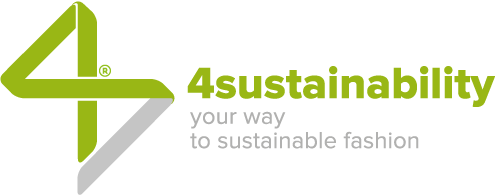Cotton, wool, polyester… There’s no material that, during its production cycle, does not generate some environmental and social impact, and we need to be aware of these impacts if we want to do our part for a more sustainable fashion. With an upstream premise: giving a sustainability license to raw materials to define with certainty whether one is better than the other literally makes no sense.
Considering that each fiber has its own peculiarities and lends itself to some uses and not others, drawing up a ranking would be impossible, as well as superficial. What can we do then? In what terms can we define the sustainability content of a material? We can simply list advantages, criticalities, and any less impactful alternatives, leaving other aspects such as costs and technical characteristics that clearly deserve a separate discussion in the background.
Never easy to compare
Two-thirds of the product’s impact in terms of water, energy, emissions, waste and land consumption can be attributed to raw materials. This data from the Global Fashion Agenda, the most important international forum on sustainability in fashion, is enough to understand how high the stakes are.
Now, the instinctive choice to reduce the environmental footprint of our purchases, would be to prefer garments made with natural fibers. It’s a pity that the matter is much more intricate…
Taking, for example, cotton, whose cultivation employs around a quarter of the insecticides and herbicides used globally. If it were completely replaced by organic cotton, the primary energy requirement would drop by 62%. On the other hand, replacing virgin polyester with recycled polyester, would cut the use of toxic substances by up to 90%, energy consumption by 60% and emissions by up to 40%.
These numbers tell us how articulated the considerations to be made are and how appropriate, also considering a picture further complicated by the multiplicity of measurement systems in use, that the fashion industry takes up the invitation of the Global Fashion Agenda “to concentrate on the development of new, more sustainable raw materials”.
Fibers’ production
From reading the latest Textile Exchange report for 2019, which is therefore not affected by the effects of Covid19, it emerges that global fiber production amounts to 111 million tons, a quantity that has doubled in the last 20 years and has grown by 2.7% compared to 2018. Continuing on this rate, it would reach 146 million tons by 2030.
Synthetic fibers are the master. Polyester alone accounts for 52% of global production, but also considering nylon and other synthetic fibers it reaches 62.9%.
Cotton is second in the ranking, with a production of 25.7 million tons, of which about 25% can be defined as sustainable. As for artificial cellulosic fibers, namely viscose, acetate, Lyocell, Modal and Cupro, we are in full swing: up to 1990 about 3 million tons were produced per year, rising to 7 million tons in 2019.
Focus on wool and cotton
To better understand the pros and cons of the different raw materials from a sustainable perspective, let’s focus on two textile fibers that are among the most used and familiar to consumers too: wool and cotton.
WOOL
The main environmental advantage of wool is that it’s natural, renewable and completely biodegradable resource. However, working with wool has some limits to keep in mind. First of all, in the washing phase, because the essential steps to purify the wool and eliminate waste require a large amount of water and chemicals.
Intensive livestock farming contributes to aggravating soil degradation, accelerating the desertification process of geographical areas already affected by frequent waves of drought.
Furthermore, despite being a natural fiber, wool also has an impact on climate change. In fact, methane and nitrous oxide deriving from animal waste are greenhouse gases.
From a purely environmental dimension to the ethical one linked to animal welfare, the step is short. How do we know if our sweater was made without mistreating animals? And what are the sustainable “alternatives”? we can identify three great families.
Organic Wool
It comes from farms where the animals are left free to move, fed with organic feed and treated with natural methods, without the indiscriminate use of antibiotics. The main reference is the set of five fundamental freedoms of the animal codified in 1979 by the Farm Animal Welfare Council (FAWC), the most widespread certification scheme, the Global Organic Textile Standard (GOTS).
Responsible wool
The best-known certification is called RWS (Responsible Wool Standard), it was developed by Textile Exchange and relies on the concept of chain of custody: if we notice the RWS brand on the label of our sweater, this means in principle that the steps of production have been certified. Similar to the RWS certification, because they share the same attention to animal welfare, there are other schemes verified through third-party audits, such as the New Zealand ZQ, Nativa, Schneider, SustainaWool and others.
Recycled Wool
More than recycled wool, we should technically speak of regenerated wool, that is made with raw materials obtained from the reuse of waste with an identical destination to that of its “first life”. There are two great advantages in terms of sustainability: the need for virgin raw materials is reduced and the dyeing phase is avoided, with all the foreseeable savings in water and chemicals that it brings with it. As reference certification schemes, we mention among others, GOTS and Recycled Claim Standard (RCS).
COTTON
When we have to choose a baby romper, a set of sheets or a t-shirt, grandma’s advice is always the same: check on the label that they are made of pure cotton. We all agree on the properties of this natural fiber, fresh, breathable, resistant and hypoallergenic.
But what about sustainability? Being a natural fiber, cotton is biodegradable, it decomposes on average in a couple of months, and this is precisely one of its greatest environmental advantages.
Promising is also the possibility of reusing production waste, for example to create sound-absorbing or insulating materials used in construction. We have already mentioned in part about the cons. Conventional agricultural practices make extensive use of chemicals to accelerate the growth of cotton plants, harmful products for human health that also contribute to soil depletion. And then there is the immense waste of water caused, even before cultivation needs, by obsolete water management systems.
A terrible chapter is also that of the exploitation of child labor and forced labor: millions of people employed in the cotton fields without any kind of protection.
Sustainable alternatives, at least on paper, do exist. Let’s try to summarize the main ones.
Organic cotton
According to Textile Exchange organic cotton, certified Organic Cotton Standard (OCS) or GOTS, for example consumes 62% less energy and 71% less water than traditional cotton. The difference is manly in the cultivation phase, because among other things, GMOs are banned, the seeds are not treated with chemicals and pests are kept away through natural methods, rather than using herbicides and pesticides.
The second large family is represented by recycled cotton, whose production has a significantly lower impact because it does not require the use of virgin fiber but uses only pre-consumer (i.e. production waste) or post-consumer (i.e. discarded clothing materials).
If we want to make sure that a garment is made from recycled raw materials, we can look for the symbol of certifications such as Global Recycle Standard (GRS) and RCS.
Standard initiatives
In addition to certifications, there are also some product-independent initiatives that each brand is free to join to support a more sustainable model. The most popular of all, focused on training farmers, is the Better Cotton Initiative (BCI). Farmers learn to use water more efficiently, to prefer techniques that respect the balance of the soil and natural habitats, to minimize the use of toxic chemicals and to ensure decent working conditions.
Everything is clear?
Cotton is second only to polyester in the ranking of the most common fibers, with almost 26 million tons produced in 2019. About 80% comes from just six countries: India, China, USA, Pakistan, Brazil, and Uzbekistan. India is, in particular, the largest producer of organic cotton in the world, with a growth of 48% in the last year, despite the pandemic. Growth however, which according to several sources is false, because the “organic” label associated with cotton is false.
On the dock is an opaque, if not quite fraudulent, certification system. Consumers are guaranteed the “organic” material of the brands, which are based on official stamps of approval from external organizations. These stamps are in turn based on reports from opaque local inspection agencies, which base their conclusions on a single scheduled annual inspection or on a few random visits. In 2009, India’s agricultural export agency uncovered a large-scale fraud, with entire villages certifying genetically modified cotton as organic. The government promised it would release the digital tracking software next year, but he never did.
The credibility of the inspection agencies, meanwhile, has been destroyed. To the point that the European Union has voted to no longer accept Indian organic exports certified by some international agencies.
Structure the commitment
According to Francesca Rulli, CEO of Process Factory/4sustainability®, the certification schemes have an important function, as long as the upstream checks are carried out with a logic of correctness and transparency and as long as they are part of a transversal commitment to sustainability on the part of the companies. Obviously, it cannot be limited to obtaining a stamp. “The hallmark, if the upstream release process is credible, is what allows us to recognize the sustainability content of a given product. And it has a much more value the more it is integrated into a structured path for the creation of a sustainable production model. The 4sustainability frameworks was created to exactly support this commitment, measuring the performance of companies in the supply chain on all dimensions of sustainability relevant to the sector”.
In short, a systemic approach is needed. The single attribute of a product is a good thing, but not enough to affect the reduction of the impact of production. This is what Rulli tries to “translate” in her book Fashionisti consapevoli. Vademecum of sustainable fashion (Dario Flaccovio Editore 2022) thinking of a wider audience than just professionals.

